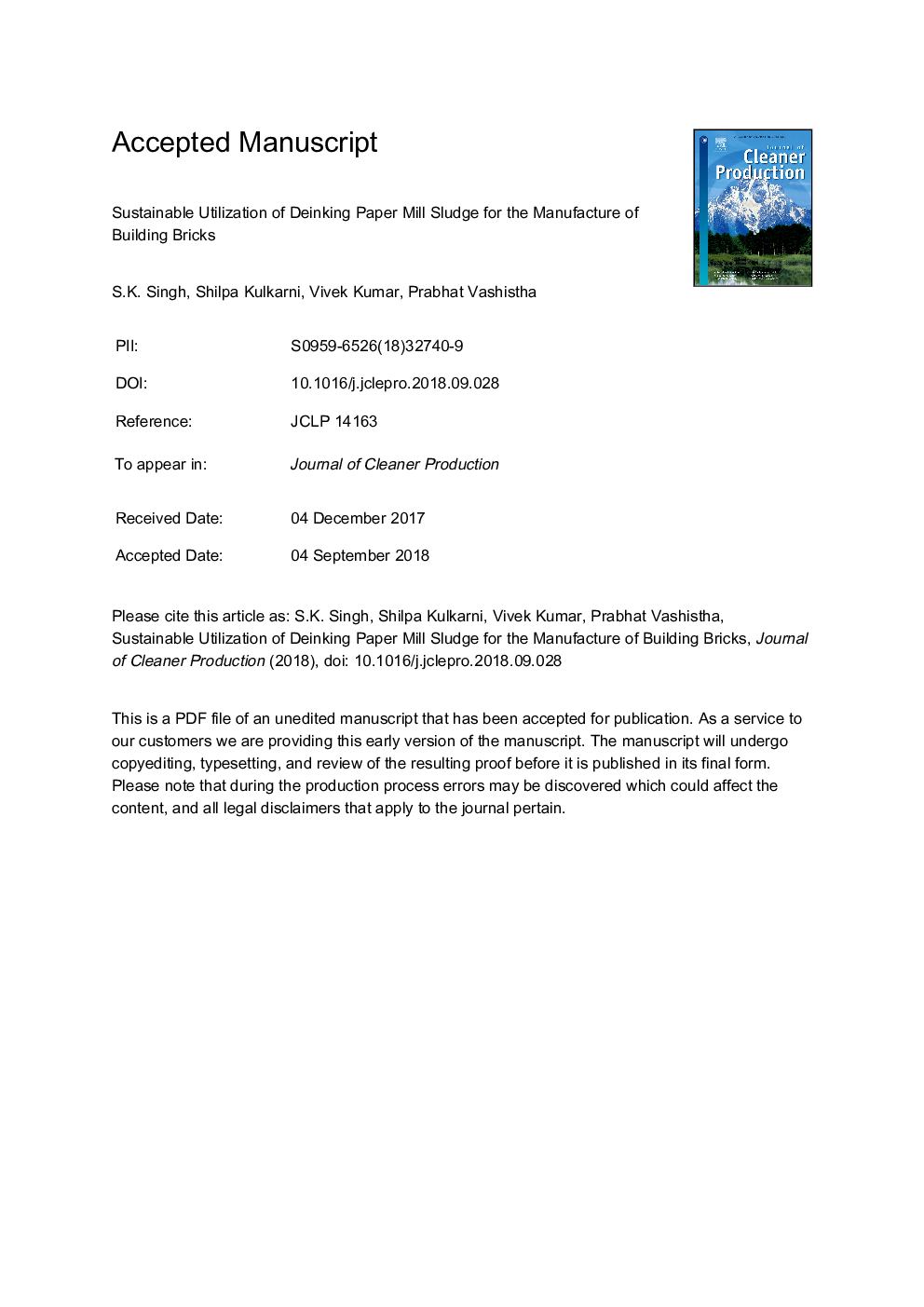| Article ID | Journal | Published Year | Pages | File Type |
|---|---|---|---|---|
| 10149187 | Journal of Cleaner Production | 2018 | 23 Pages |
Abstract
Building bricks were produced by utilizing deinking paper mill sludge (DPMS) and alluvial soil by varying percentage of sludge at different firing temperatures. Different mix proportions were prepared with 0%, 5%, 10%, 15%, 20%, 25% and 30% of DPMS incorporation in alluvial soil by weight. Three firing temperatures of 900â¯Â°C, 950â¯Â°C and 1000â¯Â°C were investigated to simulate the typical condition of kiln. The density, firing shrinkage, water absorption, efflorescence, apparent porosity, compressive strength and thermal conductivity of the bricks were determined. The XRD and microstructural analysis of brick specimens were also studied. The optimum firing temperature was 950â¯Â°C. The thermal conductivity decreases with increase in percentage of deinking paper mill sludge. It was found that 15% deinking paper mill sludge gives optimum strength at firing temperature of 950â¯Â°C. Developed bricks satisfy the requirements of class 10 of Bureau of Indian Standards (BIS), in terms of efflorescence, compressive strength and water absorption. Thermal conductivity results show that the developed brick was thermally more insulated than the conventional bricks and can be used as alternative to conventional bricks. This will address the issue of waste management through cleaner production and show the ways towards sustainable, economical and energy efficient construction.
Related Topics
Physical Sciences and Engineering
Energy
Renewable Energy, Sustainability and the Environment
Authors
S.K. Singh, Shilpa Kulkarni, Vivek Kumar, Prabhat Vashistha,
